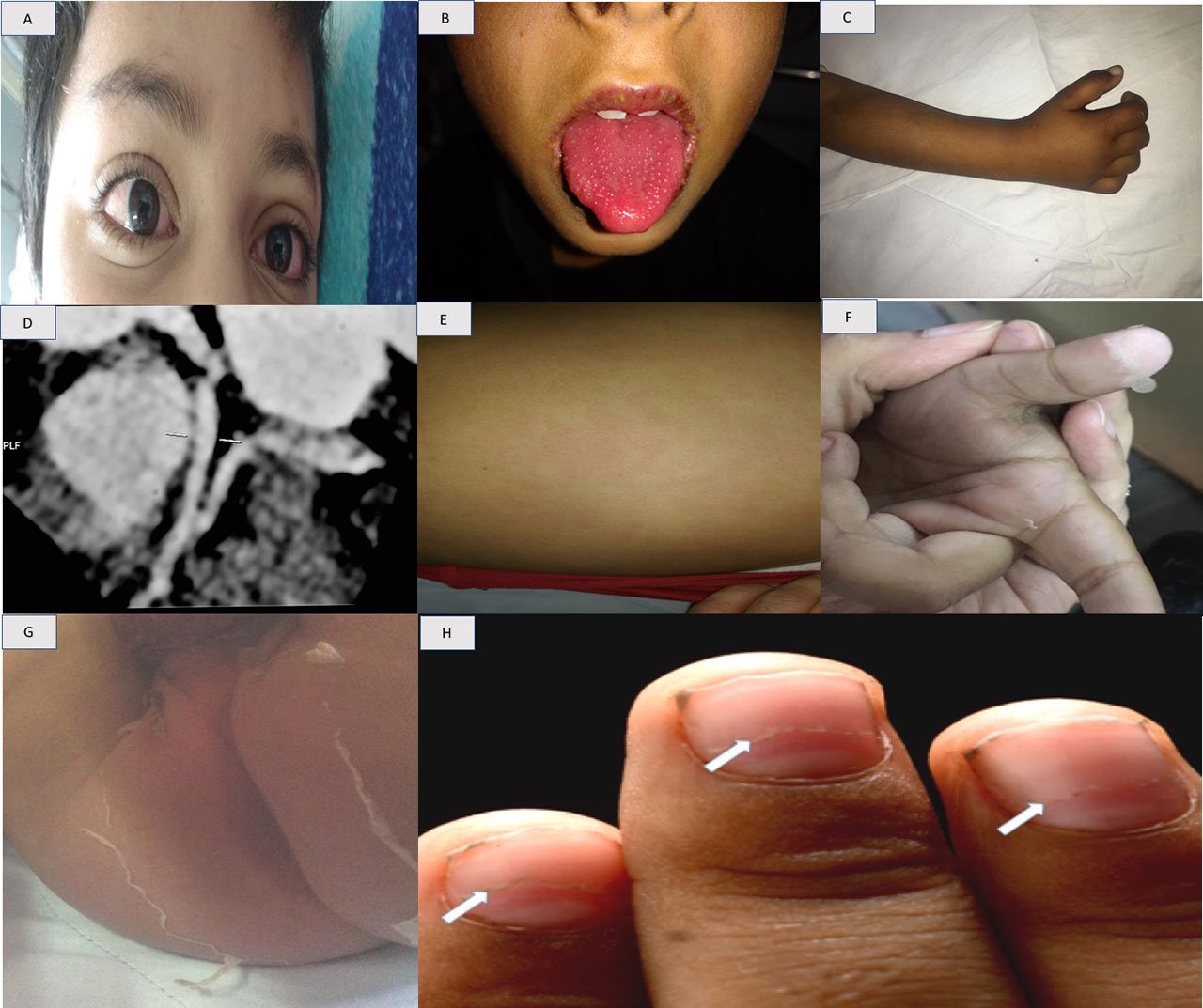Session Information
Date: Monday, November 11, 2019
Title: Pediatric Rheumatology – ePoster II: SLE, Juvenile Dermatomyositis, & Scleroderma
Session Type: Poster Session (Monday)
Session Time: 9:00AM-11:00AM
Background/Purpose: Approximately 5% patients with Kawasaki disease (KD) can present with cardiovascular collapse-the KD Shock Syndrome (KDSS). This is an unusual presentation of KD and is often confused with septic shock. As a result, the diagnosis can be easily missed. We report the profile of patients with KDSS from a cohort of 810 KD patients at Pediatric Rheumatology Clinic, Advanced Pediatrics Centre, Postgraduate Institute of Medical Education and Research, Chandigarh, North-West India.
Methods: 810 children were diagnosed to have KD during the period January 1994-December 2018. Case files of patients with KDSS were retrieved and clinical details recorded.
Results: Of the 810 cases, 28 (15 boys; 13 girls) had hemodynamic instability. Median age at diagnosis was 7 years (range 6 months-14.5 years). All patients required inotropic support. Infection triggered KD was seen in 6 patients and most common organism was Staphylococcus aureus. Initial diagnosis of toxic shock syndrome (TSS) had been given in 15 (53.6%) patients. Thrombocytopenia was seen in 12 (42.9%). We were able to perform NT-proBNP in 11 patients and median value was 921.5 (225-9450) pg/mL. First line treatment was intravenous immunoglobulin (IVIg) therapy. Second line therapy was required in 9 patients – infliximab in 3; second dose IVIg in 2 and glucocorticoids in 4. Coronary artery abnormalities (CAAs) were seen in 5 (17.8%) – of these, one had giant aneurysms in left anterior descending coronary artery and right coronary artery. Six had severe myocardial dysfunction secondary to myocarditis. We recorded one death amongst the patients with KDSS.
Conclusion: Both KDSS and TSS can present to the Emergency Room with fever, rash, and shock. Clinical differentiation between the two entities is crucial as management protocols for the 2 conditions are completely different. Delays in recognition of KDSS are not uncommon and may result in avoidable morbidity and occasional mortality. Patients with KDSS are at an increased risk of developing CAAs.
To cite this abstract in AMA style:
KUMAR R, Chaudhary H, Singhal M, Singh S. Kawasaki Disease Shock Syndrome – More Common Than We Think: Our Experience at Chandigarh, North India [abstract]. Arthritis Rheumatol. 2019; 71 (suppl 10). https://acrabstracts.org/abstract/kawasaki-disease-shock-syndrome-more-common-than-we-think-our-experience-at-chandigarh-north-india/. Accessed .« Back to 2019 ACR/ARP Annual Meeting
ACR Meeting Abstracts - https://acrabstracts.org/abstract/kawasaki-disease-shock-syndrome-more-common-than-we-think-our-experience-at-chandigarh-north-india/

